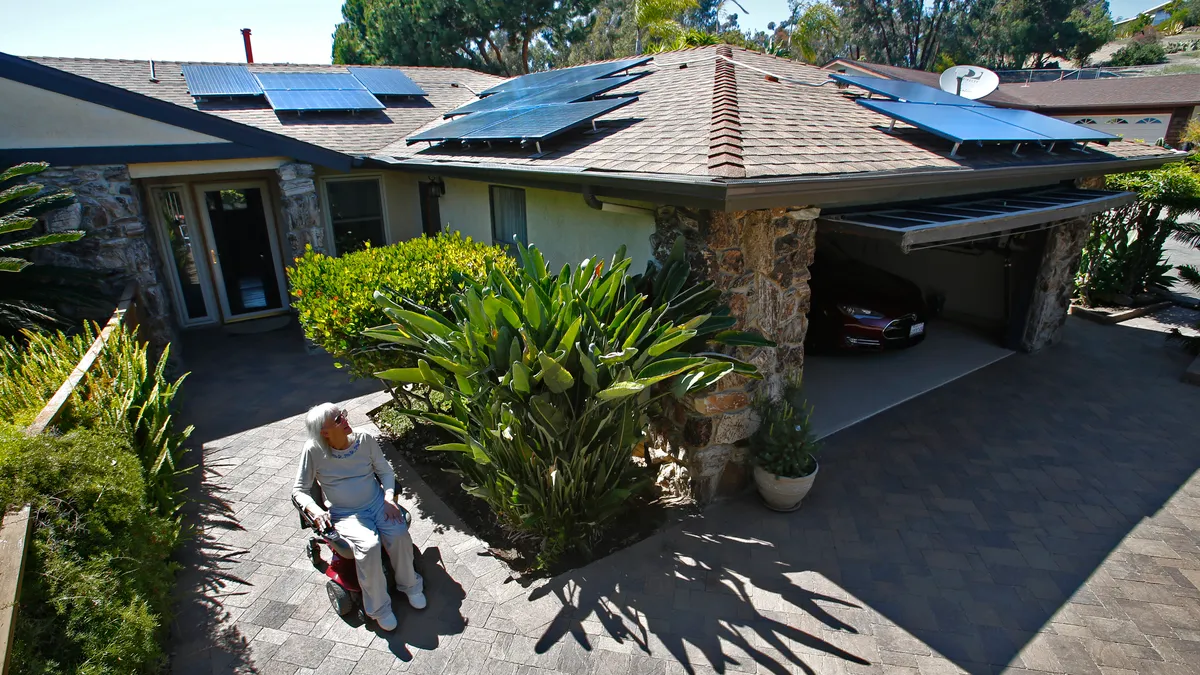Dive Brief:
- The COVID-19 pandemic is hurting California’s customer-focused clean energy programs, including efforts to promote behind-the-meter solar and storage, energy efficiency and initiatives targeting low-income customers, industry players told the California Public Utilities Commission (CPUC) at a workshop Thursday.
- Of the 212 companies polled recently by the California Solar and Storage Association (CalSSA), 92% are seeing the pandemic negatively impact their business, while 46% have rolled out some combination of layoffs, furloughs and pay cuts, according to Brad Heavner, the association’s policy director
- “We have major concerns that we’re about to permanently lose the infrastructure to deliver efficiency resources” that took decades to build up and can’t be restored overnight, Greg Wikler, executive director of the California Efficiency + Demand Management Council said, adding that he worries the state will not be able to realize its ambitious carbon goals as a result.
Dive Insight:
COVID-19 is unlike any crisis California has seen before, Edward Randolph, deputy executive director at the CPUC, said at the workshop. The agency has seen a lot of parties bring up individual problems, indicating that the customer-focused clean energy sector is facing a host of issues.
But while the agency is looking to identify solutions to the crisis, it is also prioritizing cost control. Anything that requires utilities to spend money today will ultimately end up on ratepayer bills, Randolph noted. The CPUC is already seeing the potential for rate increases of 20% and higher over the next three or four years, driven largely by wildfire mitigation costs.
“So, we do need to keep those cost pressures in mind now more so than ever,” he said.
Randolph also noted that there is only so much regulators can do, and “we do need to balance out solutions that will help a few people today against the potential for taking our focus away from programs that will help thousands, if not millions, of people in the next year or so.”
California companies in the solar and storage space have had to quickly downsize, lay people off and roll out pay cuts, Heavner said. Looking at pre-COVID job figures and the responses to CalSSA’s survey, companies have either laid off or furloughed 21% of all of their employees, he said.
“So it’s really heartbreaking and it’s happening all over the place,” he said.
California’s energy efficiency sector is witnessing similar impacts, including rapid drop-offs in activities, leading to furloughs and layoffs that are affecting a significant portion of the 300,000-plus efficiency and demand management workforce, according to Wikler.
The pandemic has also been the “ultimate disrupter” for programs that cater to low-income customers, Patricia Watts, founder, president and CEO of FCI Management, said. “It happened so fast we didn’t have time to plan.”
California provides low-income households with no-cost weatherization services — like efficient refrigerators, low-flow shower heads and attic insulation — through its Energy Savings Assistance (ESA) program. ESA contractors are primarily small businesses, many of which are minority and women-owned businesses, and are facing challenges in maintaining financial stability, cash flow, overhead and paying suppliers, Watts said. Retaining employees is a priority and while there are state and federal funds that are being offered to help employers, accessing those can be challenging, she said.
Heavner concurred, saying he’s heard lots of stories of companies having their applications for federal funding accepted, but not seeing the money yet. Another issue faced by some is that their banks, as middlemen, didn’t make the connection in time or weren’t part of the program, he added. But, “there’s a lot of hope for the next round.”
Heavner also encouraged regulators to pass economic stimulus policies similar to those adopted during the 2008 recession.
The CPUC staff plans to include this feedback in memos for the agency’s decision-makers, to help inform them about the challenges and possible procedural road maps they can adopt.















